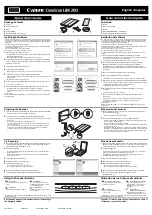
54
Trunk Scanning
55
Trunk Scanning
Type I and Hybrid Trunked Systems
Your scanner is preset to scan Type II system IDs. When you scan trunked
frequencies, each Type II user ID you see appears as an even number
without a dash (example 2160). Your scanner can also scan Type I trunked
systems. Each Type I ID appears as a three- or four-digit number, followed by
a hyphen, followed by a one- or two-digit number (example 200-14).
If you notice a mix of odd- and even-user IDs (examples 6477, 2160, 6481,
6144, and 1167), then you are probably monitoring either a Type I or hybrid
(a combination of Type I and Type II user IDs) system with the S-Bit function
turned off (see
“Setting the Status Bit Feature (S-Bit)”
on p. 56).
Subfleet information is included with the frequency list for a Type I system.
To enter a provided map, see
“Selecting a Preset Fleet Map”
below. To locate
fleet map information, refer to www.radioreference.com.
If you do not already know the size codes used, you will have to guess. Since you do
not have to figure out all the blocks at one time, this is not as hard as it might seem.
Select a size code for a block, then press
SCAN
and listen to the
conversations. If you are receiving most of the replies, then you have
probably selected the right size code and can program the next block of the
map. There are 16 preset fleet maps to choose from, and it is best to start
with these when setting up a Type I or hybrid trunk scanning bank.
If none of the following preset fleet maps allow you to follow complete
conversations, then you probably need to program your own fleet map (see
“Programming a Custom Fleet Map”
on p. 55).
Selecting a Preset Fleet Map
1.
Press
FUNC
+
MAN/MENU
to open Menu Mode.
2.
Select
Trunk Option
, then press
ENT/PGM.
Select a bank, then press
ENT/PGM.
3.
Select
MOT,
and press
ENT/PGM.
4.
Select
Edit Fleet Map,
and press
ENT/PGM.
5.
Select
Preset,
and press
ENT/PGM.
6. Select the preset map you want to use and press
ENT/PGM.
(See
“Appendix B: Fleet Maps”
on p. 69 for a description of the preset fleet maps).
Note:
When the scanner searches for transmissions, Type I fleet and
subfleet IDs such as 100-12, 100-9, 000-12, or 400-8 display.
Programming a Custom Fleet Map
You must set the fleet map if you want to receive a Motorola Type I system.
Fleet maps are included along with other information about Motorola Type I
systems at www.radioreference.com.
Follow these steps to program a custom fleet map.
1.
Press
ENT/PGM
then
TRUNK/MODE
.
2.
Press
FUNC +
T
or
S
to select the desired bank.
3.
Press
FUNC + 8
, then select
Custom
and press
ENT/PGM
.
4.
Select the block and press
ENT/PGM.
5.
Select the size code supplied with the Type I system information and
press
ENT/PGM
.
6.
Repeat steps 4 and 5 for each block.
7.
Make sure each entry is correct.
Notes:
•
The default setting of the bank is Motorola Type II.
•
However, if you set Type I and you want to return to Type II, enter 15
at Step 5.
•
If you cannot find your fleet map information, see
“Appendix B: Fleet
Maps”
on p. 69
for a description of the preset fleet maps.
Setting Control Channel Only Mode
When this function is activated, trunking is performed using Control Channel
data only. Voice channel frequencies do not have to be programmed into
memory. This feature only applies to Motorola 800 MHz, 800 MHz Custom,
900 MHz, VHF, UHF systems.
Summary of Contents for PRO-160
Page 40: ...78 79 Notes Notes...














































